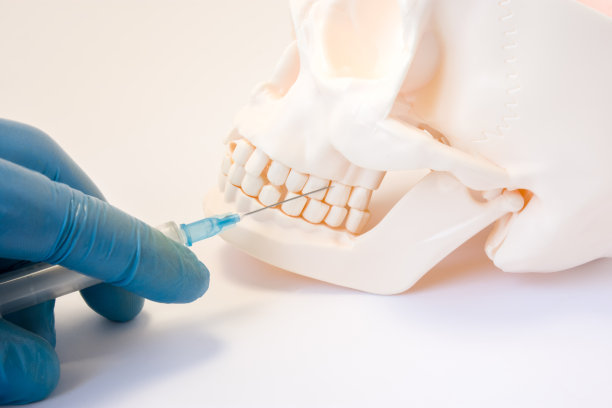The Essential Guide to Extracting a Tooth and Managing Post-Procedure Care for Optimal Recovery
Summary: Extracting a tooth can be a daunting experience, but with the right knowledge and proper post-procedure care, optimal recovery is achievable. This comprehensive guide delves into the crucial aspects of tooth extraction, including preparation, the extraction process, immediate aftercare, and long-term recovery strategies. By understanding these key areas, patients can navigate the challenges associated with tooth removal and ensure a smoother healing process. Empower yourself with essential tips for managing pain and minimizing complications, ensuring that your journey from tooth extraction to recovery is as comfortable as possible.
1. Preparing for a Tooth Extraction

Preparing for a tooth extraction is an essential first step in ensuring a smooth procedure. It begins with a thorough consultation with your dentist, who will assess your dental health and discuss the reasons for the extraction. During this visit, you should communicate any medical conditions, medications, or allergies that may affect the procedure. This information helps your dentist tailor the extraction process to your unique needs.
Once you have discussed your case with your dentist, it’s crucial to follow any pre-operative instructions they provide thoroughly. These may include dietary restrictions, such as avoiding food or drink for a certain period before the procedure, and arranging transportation to and from the appointment. By being well-prepared, you can alleviate anxiety and help ensure a seamless extraction experience.
Another important preparation step is to gather any necessary post-operative supplies in advance. This includes ice packs, over-the-counter pain relievers, gauze, and soft food options. Being ready for recovery can significantly reduce stress and allow you to focus on healing following the extraction.
2. Understanding the Tooth Extraction Procedure
Tooth extraction typically involves the administration of local anesthesia to numb the area around the tooth. This ensures that you remain comfortable and free from pain during the procedure. Depending on the complexity of the extraction, sedation options may also be provided to help manage anxiety.
The actual extraction process may vary based on the tooths location and condition. For simple extractions, your dentist will gently loosen the tooth before removing it with forceps. Complex extractions, such as those involving impacted teeth, may require surgical intervention, which the dentist will explain in detail beforehand.
Throughout the procedure, it’s important to remain calm and follow your dentists instructions. If you have any discomfort or concerns during the extraction, let your dentist know immediately. Once the tooth has been removed, your dentist will provide you with care instructions to promote healing and prevent complications.
3. Immediate Aftercare for Tooth Extraction
Immediate aftercare plays a crucial role in the healing process following a tooth extraction. As soon as the procedure is completed, your dentist will place a piece of gauze over the extraction site to help control bleeding. It’s essential to bite down gently on the gauze for at least 30 minutes to facilitate clot formation and minimize bleeding.
During the first 24 hours post-extraction, avoid strenuous physical activity, as this can increase blood flow and potentially lead to complications such as bleeding or dislodging the blood clot. Resting and keeping your head elevated can help mitigate these risks.
Pain management is another critical aspect of immediate aftercare. Over-the-counter pain relievers like ibuprofen or acetaminophen can be effective in alleviating discomfort. Additionally, applying ice packs to the outside of your cheek can help reduce swelling during the first 48 hours. Following your dentists recommended pain management plan is vital for a comfortable recovery.
4. Long-Term Recovery Strategies
Long-term recovery after a tooth extraction requires a combination of good oral hygiene practices and dietary considerations. After the first few days, you can gently resume brushing your teeth, but be careful around the extraction site. Keeping your mouth clean will significantly reduce the risk of infection and promote healing.
In terms of diet, its essential to start with soft foods and gradually reintroduce harder items as you feel comfortable. Foods like yogurt, applesauce, and mashed potatoes are excellent choices initially. Avoid hot, spicy, or chewy foods, which may irritate the site and prolong recovery.
Lastly, keep an eye out for any unusual symptoms during your recovery. If you experience excessive bleeding, persistent pain, or signs of infection such as fever or swelling, contact your dentist immediately. Being proactive and vigilant about your recovery can ensure that your healing process remains uneventful and successful.
Summary:
This guide emphasizes the importance of preparation, understanding the extraction procedure, immediate aftercare, and long-term recovery. Each aspect plays a vital role in facilitating a hassle-free tooth extraction and ensuring optimal recovery.
Being informed and prepared enhances your confidence and enhances the overall experience of tooth extraction. Taking the right steps can lead to a smoother recovery journey, helping you manage any challenges that arise along the way.
This article is compiled by Vickong Dental and the content is for reference only.


